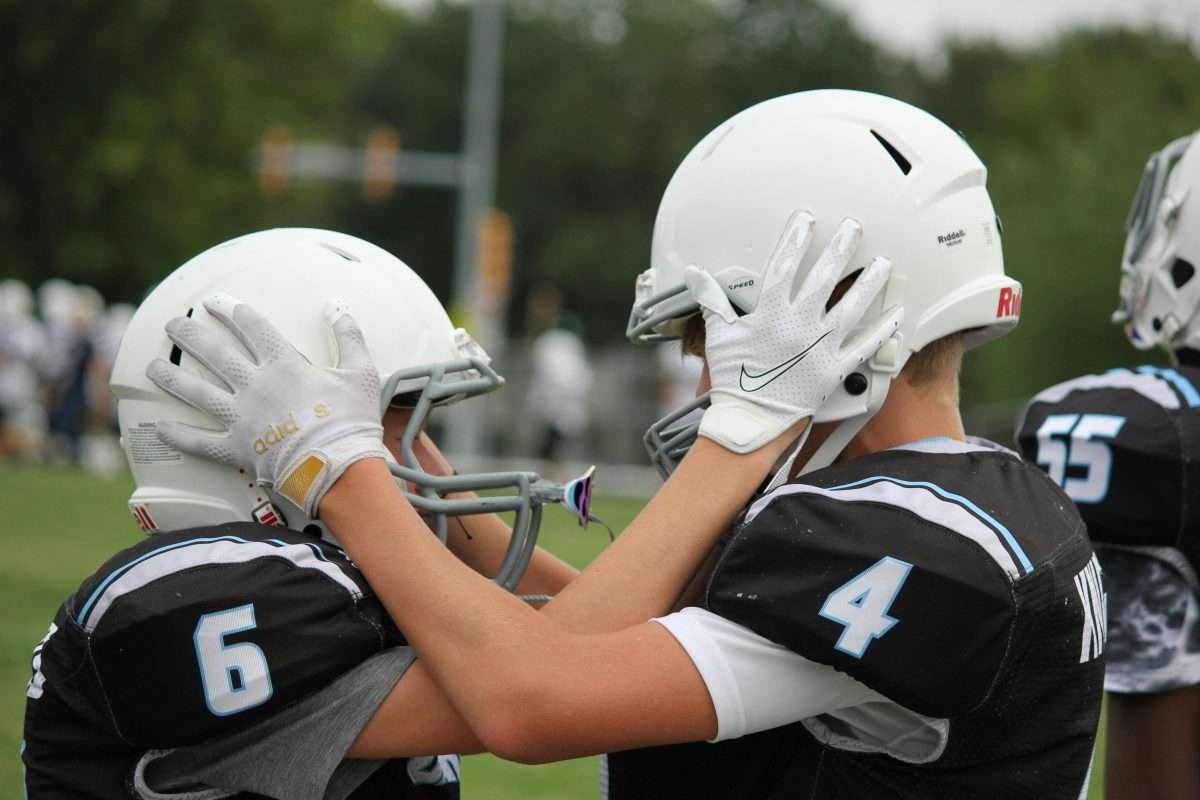For Tim Fleiszer what needs to happen next to protect young brains, is clear.
“We should not be exposing children to any sort of head impacts, certainly under the age of 12 and probably under the age of 14, just to be safe,” says the retired professional athlete, who played 10 seasons in the Canadian Football League (CFL).
In practice, that would mean removing tackling in football and rugby and body checking in hockey in those age groups, according to Flesizer, who is Executive Director of the Concussion Legacy Foundation Canada.
“We actually have an opportunity to be a world leader in this,” he told Lianne Castelino during an interview for Where Parents Talk, adding, “although we are starting to fall behind as compared to some of our close allies.”
Perhaps surprisingly, the four-time Grey Cup champion says the key culprit these days when it comes to concussions and kids is not what you may think. “The number one issue that we have right now in Canada is actually soccer,” he says. “Just for context, they banned heading for kids under the age of 12 in soccer in the US in 2016. They just recently banned it also in the UK. We’re now behind in that.”
There are about one million youth soccer players in Canada between 3 and 17 years of age. By contrast, Canadian youth playing organized hockey numbers just under 500,000, according to the most recent statistics available.
A Personal Mission
“If there was one single policy change that we could make in Canada to protect kids brains, it would be taking heading out of soccer,” says Fleiszer. “Remember, for kids, especially the little kids, these headers don’t really happen very much in games, they typically happen in practice and they typically happen with an adult lobbing a ball at a child repeatedly and having them head balls over and over again. It seems like a really innocuous thing.”
When Fleiszer talks about brain injury, it’s personal.

“I lost a college teammate—someone I trained with, fought for wins with—someone I admired. He went on to play in the NFL, and then… he was gone,” says Fleiszer recounting this devestating experience while a student-athlete at Harvard.
It was one of the many reasons why Fleiszer has made it his life’s mission to tackle concussions and the invisible injury that’s affecting thousands of athletes, veterans, and victims of violence: Chronic Traumatic Encephalopathy, or CTE.
What Every Parent Needs to Know About CTE
While most parents have heard of concussions, many still don’t realize that CTE isn’t caused by a single hit to the head. It’s caused by repeated impacts—many of which don’t even cause a concussion.
“I think there’s still confusion around what the cause of CTE is,” says Fleiszer. “It’s the total number of repetitive head impacts that somebody’s been subjected to and how hard those impacts have been during the course of their career. We found CTE in military personnel, we found CTE in victims of violence, accident victims. Anybody who’s getting subjected to repetitive hits to the head would be at risk for this. I think that’s the most important thing to understand.”
The research also shows that CTE is the only preventable neurodegenerative disease, yet, awareness of it remains limited.
 Forward Progress
Forward Progress
While Canada may be lagging behind in certain aspects of this issue, according to Fleiszer, progress continues in others.
Toronto’s Centre for Addiction and Mental Health (CAMH) is home to cutting-edge research that may one day allow for diagnosis of CTE while a person is still alive—something that was once considered impossible. And the growing list of Canadians, including Olympians, veterans, and politicians like former astronaut Mark Garneau, who have pledged to donate their brains to science, is powerful.
“These pledges bring awareness and inspire others. We’ve now had nearly 1,200 Canadians sign up to donate their brains. That’s 1,200 steps closer to better understanding—and hopefully, prevention,” says Fleiszer.
What Parents Can Do
Flesizer has seen both ends of the parenting spectrum: the overprotective “no-sports-ever” camp, and the “walk-it-off” crowd. He suggests there is a balance and offers some practical strategies for parents to consider:
-
Talk to your kids about their brains. Before teaching them about injury, help them understand what the brain is and how it works. Then explain what happens when it gets hurt.
-
Teach the bystander effect. Often, injured kids don’t speak up—but their friends notice something’s off. “Rowan Stringer, the teen whose story led to Ontario’s Rowan’s Law, didn’t tell her parents or coach. She told her friends,” Flesizer recalls. “We need to empower kids to help each other.”

-
Pay attention to rough play—but don’t fear it. As a father of three boys under nine years of age, Fleiszer is quick to point out that roughhousing is important. “In my house, it looks like MMA half the time. Kids need to learn boundaries and resilience. The goal is to find an acceptable level of risk—not eliminate risk entirely.”
-
Be cautious, not dismissive. If your child takes a hard fall, even if they seem fine, keep a mental note. Some symptoms take days or weeks to appear.
-
Sit them out if there’s doubt. “Missing a game is far better than losing a season—or worse, their future health,” he says.
A proposed law, Bill C-277, is currently making its way through Parliament. It aims to bring national awareness, research funding, and healthcare training around brain injuries. Fleiszer is hopeful—but clear that parents, educators, and coaches must lead from the front.
“It’s not about taking sport away. It’s about making it safer, smarter—and sustainable for our kids,” he says.
“Educate yourself. Talk to your kids. And if you really want to support the future of brain health? Pledge your brain. It sounds extreme—but it’s one of the most generous things you can do.”
Related links
Related articles
The impact of bodychecking experience on concussion risk among teen hockey players: Canadian study
